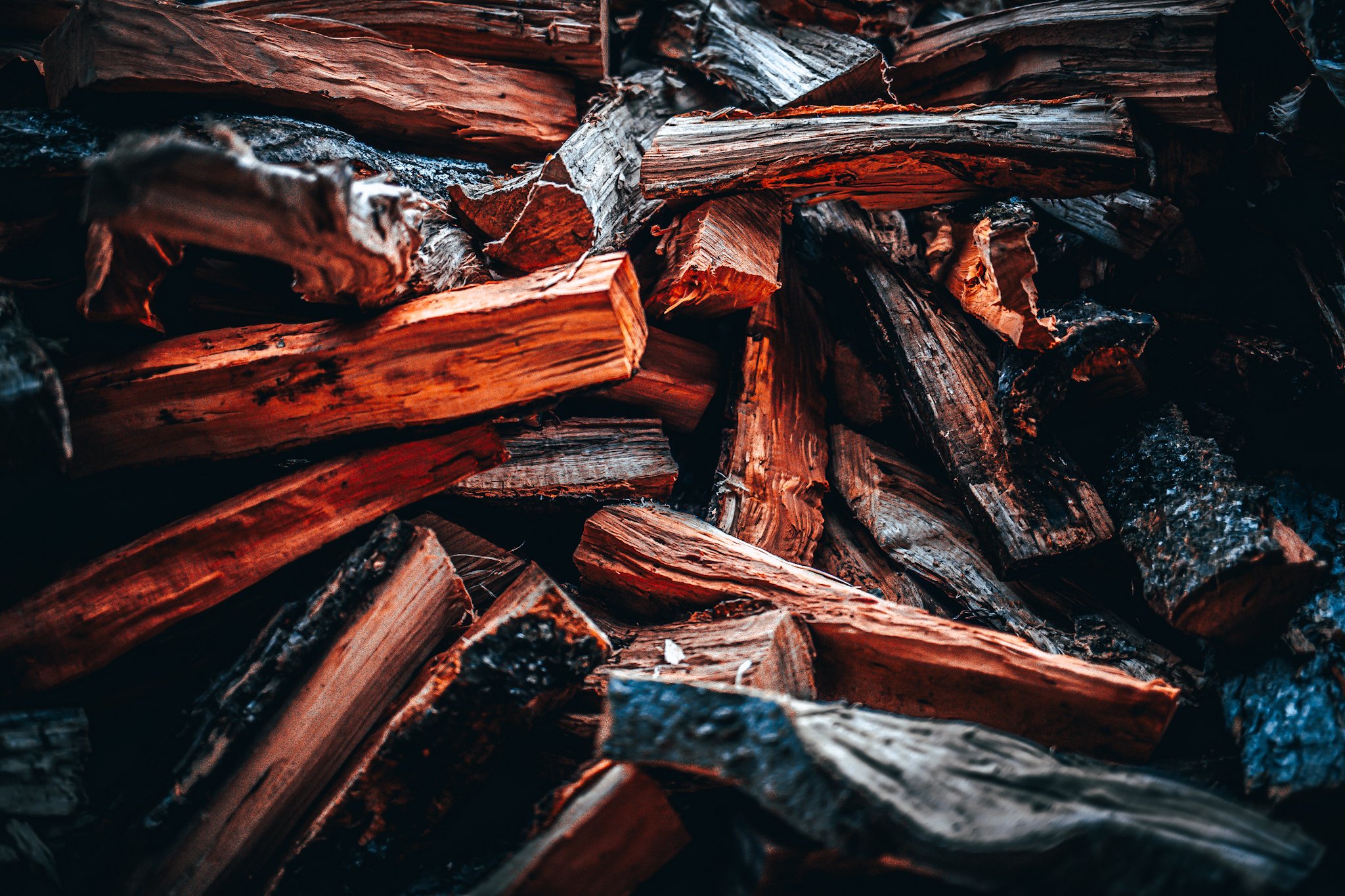Firewood 101
What is Hardwood Firewood?
Hardwood firewood refers to firewood that comes from deciduous trees, which are trees that lose their leaves in autumn. These types of trees typically have denser wood fibers, which results in a variety of characteristics that make hardwoods well-suited for burning. Here’s a closer look at what hardwood firewood is, its benefits, and some common types:
Characteristics of Hardwood Firewood
Density: Hardwood is generally denser than softwood, meaning it has a higher mass and will produce more heat when burned. This density also contributes to a longer burn time.
Moisture Content: Hardwoods typically have a lower moisture content than softwoods, which allows them to burn more efficiently and produce less smoke when properly seasoned.
Heat Output: Due to their density, hardwoods generally produce more heat per unit of wood burned, making them a preferred choice for heating homes and cooking.
Coals: Hardwood firewood often produces lasting coals, which can maintain heat longer than softwood coals, making hardwood ideal for overnight burns or long-term heat sources.
Flavor: When used for cooking or smoking, hardwoods impart unique flavors to food, which many people prefer for grilling and barbecuing.
Benefits of Hardwood Firewood
Long Burns: Due to its density, hardwood tends to burn longer than softwood, which means less frequent adding of logs and a more consistent heat source.
Less Smoke: Properly seasoned hardwood produces less smoke than some softwoods, which can help keep your fireplace or stove cleaner and minimize filtration issues.
Ideal for Heating: For those who rely on firewood as a primary source of heat in their homes, hardwood is often the better choice due to its high heat output.
What Is Seasoned Firewood?
When it comes to enjoying a cozy evening by the fire, the quality of your firewood can make all the difference. One term you'll frequently encounter in the world of firewood is "seasoned firewood." But what does this mean, and why is it important?
Seasoned firewood refers to wood that has been cut, split, and allowed to dry for a specific period, usually six months to a years, depending on the type of wood and local climate conditions. The goal of seasoning is to reduce the moisture content of the wood, which can significantly affect how it burns. Freshly cut or "green" wood can have a moisture content of 50% or more, while properly seasoned wood has a moisture content of 20% or below.
How Is Firewood Seasoned?
The process of seasoning firewood involves a few key steps:
Cutting: After sourcing the wood (recycled hardwoods from local suppliers), the logs are cut to length by a trained artisan, between 14 to 18 inches, which is a common size for fireplaces and wood stoves.
Splitting: Splitting the wood exposes more surface area to the air, which allows for increased evaporation of moisture. Smaller pieces of wood also burn more easily and help produce a hotter fire.
Drying: After cutting and splitting, the wood should be stacked in a well-ventilated area. It's best to avoid stacking the wood in direct contact with the ground, as this can lead to moisture absorption.
Time: The most crucial factor in seasoning firewood is time. Depending on the type of wood and environmental conditions, it can take anywhere from several months to a year for the wood to season properly.
Why Choose Seasoned Firewood?
1. Natural Drying Process
Flavor and Aroma: Seasoned firewood is typically dried naturally using the sun and wind, which some enthusiasts believe enhances the flavor and aroma of the smoke produced when burning, making it a preferred option for cooking or smoking food.
2. Sustainability
Natural Method: Seasoned wood is generally considered a more environmentally friendly option, as the seasoning process minimizes energy use compared to the electric or fossil fuel energy required for kiln dried firewood.
3. Availability
Local Supply: Seasoned firewood can be readily available in many regions, especially where wood is a common local resource. This can make it more accessible than kiln-dried wood, which may need to be transported from specialized suppliers.
4. Moisture Content Stability
Lower Risk of Over-Drying: Kiln drying can over dry the wood, potentially leading to cracks and increased likelihood of burning fast and dirty. Seasoned firewood, when done correctly, retains a balance of moisture that helps provide a consistent and clean burn.
5. Tradition and Preference
Wood-burning Culture: For many people, especially those who enjoy traditional wood-burning practices, seasoned firewood represents a tried-and-true method of preparing wood. There’s a cultural and practical appreciation for seasoning wood naturally over time.
Conclusion
Using seasoned hardwood firewood is essential for a successful and enjoyable burning experience. Urban Lumberjack is an excellent option for those looking for efficient, long-lasting, and hot-burning wood. Whether for heating a home, enjoying a cozy fireplace, cooking, or camping outdoors, hardwood firewood provides not only practical benefits but also enhances the experience with its unique flavors and pleasant aesthetics.





